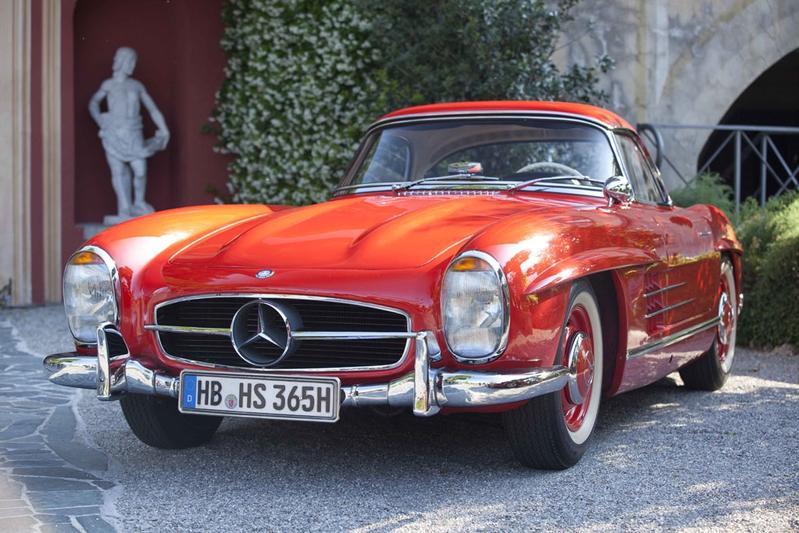1962 Mercedes-Benz 300 SL

The descriptions of the Classic Cars in the Directory were partly generated or supplemented with the help of artificial intelligence (AI). The content may occasionally not always be entirely accurate or factually correct despite careful checking.
The Mercedes-Benz 300 SL, introduced in 1954, was one of the most iconic sports cars of the 20th century. By 1962, the 300 SL had undergone a series of upgrades, including a fuel-injected engine and improved suspension, making it even more sought-after by collectors and enthusiasts. Here are some of the technical details of the 1962 Mercedes-Benz 300 SL.
Engine: The 300 SL was powered by a 3.0-liter inline six-cylinder engine, which produced 222 horsepower and 212 lb-ft of torque. The engine was fuel-injected, which was a relatively new technology at the time, and helped the car achieve better fuel economy and smoother acceleration. The engine was paired with a four-speed manual transmission.
Suspension: The 1962 300 SL had an independent front suspension with double wishbones and coil springs, while the rear suspension featured a swing axle and coil springs. The suspension was adjustable, so drivers could fine-tune the handling to their preferences. The car also had power-assisted four-wheel drum brakes, which were standard for the time.
Body: The 300 SL was designed with aerodynamics in mind, with a long and sleek body that helped reduce wind resistance. The body was made of steel, but the hood, doors, and trunk lid were made of aluminum to save weight. The iconic gullwing doors, which opened upward, were a unique feature of the 300 SL and added to its distinctive look.
Performance: The 1962 300 SL could go from 0 to 60 mph in around 8 seconds, and had a top speed of around 140 mph. This was impressive for the time, and the car was often used for racing and rally events. It also had a reputation for being a reliable and easy-to-maintain car.
Other features: The 300 SL had a number of other features that made it a desirable car. For example, it had a padded dashboard and steering wheel for added safety, and a Becker Mexico radio with speakers was available as an option. The car also had a 25-gallon fuel tank, which allowed for longer trips without having to refuel.
In conclusion, the 1962 Mercedes-Benz 300 SL was a true classic, with a powerful engine, sleek body, and advanced features for the time. Its advanced suspension and fuel-injected engine made it a joy to drive, while its distinctive design and gullwing doors made it a true icon. Today, the 300 SL remains a highly coveted collector's item, and continues to impress with its technical prowess and style.
Milestones
- Introduction of the 300 SL in 1954 as a racing car - Production of the consumer version of the 300 SL began in 1955 - Introduction of the 300 SL Roadster model in 1957 - Introduction of the 300 SL Gullwing coupe model in 1957 - Production of the 300 SL ended in 1963 - The 300 SL was the fastest car of its time with a top speed of 161 mph - It featured a fuel-injected, 3.0-liter, overhead-camshaft inline-six engine producing 215 horsepower - The 300 SL was known for its distinctive gullwing doors and lightweight, tubular-steel frame - The 300 SL won several important endurance races including the 24 Hours of Le Mans and the Carrera Panamericana - Today, the 300 SL is considered one of the most iconic and valuable Mercedes-Benz models ever produced.Technical
- Engine: 3.0L inline-six - Power: 215 horsepower - Top speed: 160 mph - Acceleration: 0-60 mph in 7.4 seconds - Transmission: 4-speed manual - Suspension: Independent suspension with double wishbones at the front and single-joint swing axle at the rear - Brakes: Disc brakes on all four wheels - Fuel system: Mechanical fuel injection - Capacity: Two-seater coupe or roadster convertible - Weight: 2,862 lbs - Production: 1962-1963, with only 209 units produced in the final year - Innovations: First production car to feature fuel injection and gull-wing doors